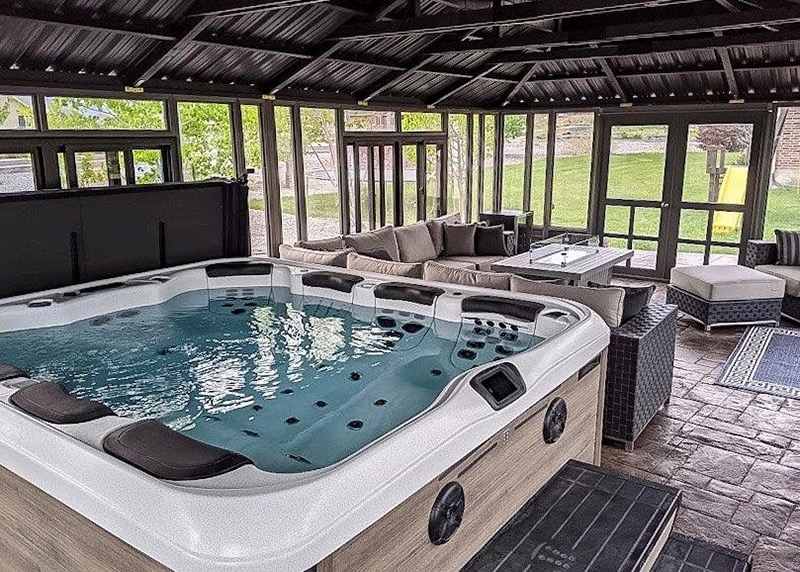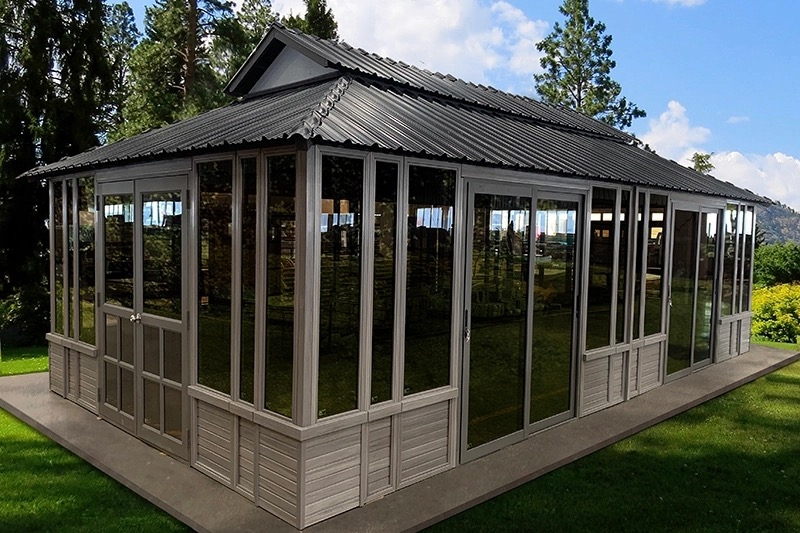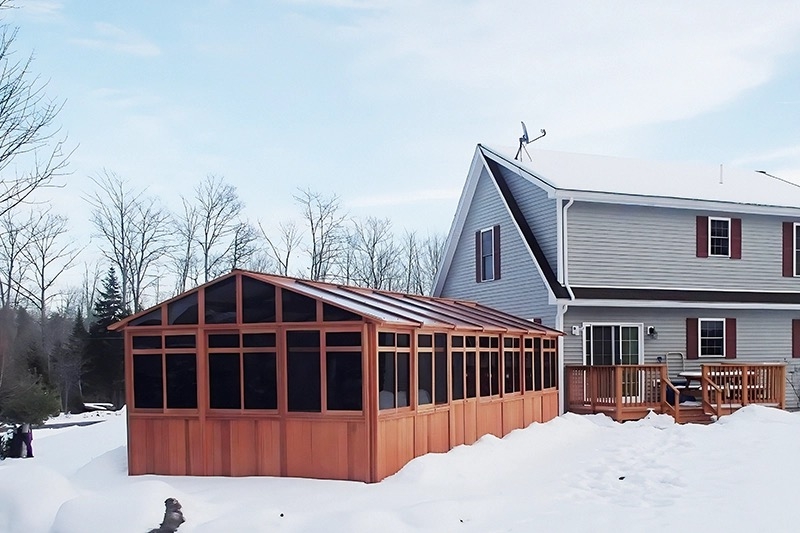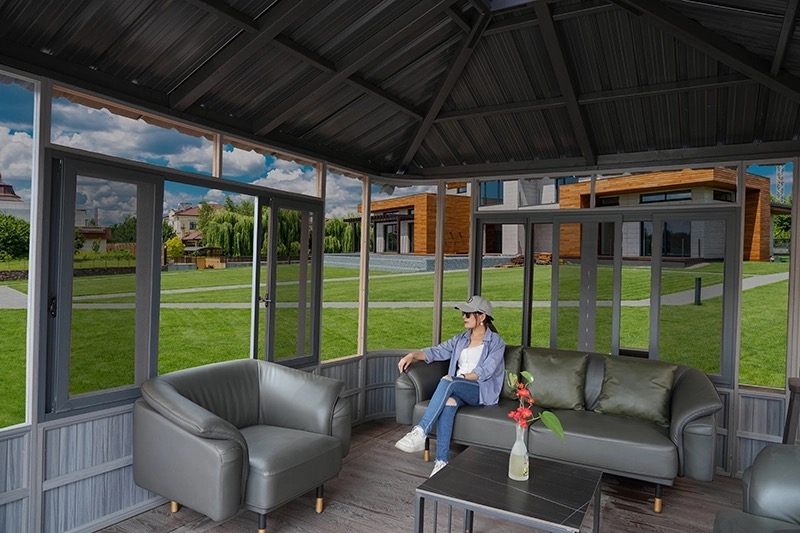When it comes to enhancing your backyard, the choice between a hot tub gazebo and a traditional gazebo can significantly impact your outdoor experience. Both structures offer unique benefits and aesthetic appeal, but they serve different purposes. This article will explore the features, advantages, and considerations of each option, helping you decide which is better suited for your backyard.
Understanding Gazebos
What is a Gazebo?
A gazebo is a freestanding, open-sided structure typically found in gardens, parks, and backyards. It provides shade and shelter, making it an ideal spot for relaxation, social gatherings, or outdoor dining. Traditional gazebos come in various styles and materials, allowing homeowners to choose one that complements their landscape. They can be constructed from wood, metal, or even vinyl, each offering different aesthetic qualities and maintenance requirements. The design of a gazebo can range from simple and functional to elaborate and ornate, often featuring decorative railings, roofs, and flooring that enhance the overall beauty of the outdoor space.
What is a Hot Tub Gazebo?
A hot tub gazebo is a specialized structure designed to house a hot tub. It offers protection from the elements while enhancing the overall aesthetic of your outdoor space. Hot tub gazebos can be fully enclosed or partially open, providing privacy and comfort for users. They often include features like built-in lighting, seating areas, and even outdoor kitchens or bars. The design of a hot tub gazebo can be tailored to fit the specific dimensions of your hot tub, ensuring a seamless integration into your backyard. Additionally, many hot tub gazebos are equipped with ventilation systems to manage humidity and heat, making them comfortable year-round.

Benefits of a Hot Tub Gazebo
Enhanced Privacy
One of the primary advantages of a hot tub gazebo is the privacy it offers. Enclosing your hot tub within a gazebo allows you to enjoy a soak without the worry of prying eyes. This is particularly beneficial for homes located close to neighbors or in busy areas. The added privacy can create a more intimate atmosphere, allowing you to relax and unwind without feeling exposed. Many hot tub gazebos also feature curtains or screens that can be drawn for additional seclusion, making it easy to create a personal oasis in your backyard.
Protection from the Elements
Hot tub gazebos provide excellent protection from rain, snow, and harsh sunlight. This means you can enjoy your hot tub year-round, regardless of the weather. The structure can also help maintain the temperature of the water, reducing heating costs and energy consumption. By shielding the hot tub from the elements, you can minimize debris accumulation, making maintenance easier. Furthermore, the roof of a hot tub gazebo can provide shade during hot summer days, allowing you to enjoy your hot tub without overheating.
Aesthetic Appeal
A well-designed hot tub gazebo can significantly enhance the visual appeal of your backyard. With various styles available, from rustic wooden designs to modern metal structures, you can choose a gazebo that complements your home and landscape. Adding decorative elements like lighting, plants, and furniture can create a beautiful outdoor retreat. The aesthetic appeal of a hot tub gazebo can transform your backyard into a luxurious escape, making it a perfect spot for entertaining guests or enjoying quiet evenings under the stars.
Increased Property Value
Investing in a hot tub gazebo can increase your property value. Potential buyers often appreciate the added luxury and functionality of a hot tub area, making your home more attractive in the real estate market. A well-constructed hot tub gazebo can be seen as a desirable feature, setting your property apart from others. This investment not only enhances your enjoyment of your home but can also yield a return when it comes time to sell.

Benefits of a Traditional Gazebo
Versatility
Traditional gazebos are versatile structures that can serve multiple purposes. They can be used for outdoor dining, relaxation, or as a gathering space for family and friends. This flexibility makes them a valuable addition to any backyard. A traditional gazebo can be the perfect setting for summer barbecues, birthday parties, or simply a quiet place to read a book. The open design allows for airflow and natural light, creating a pleasant environment for various activities.
Aesthetic Variety
Like hot tub gazebos, traditional gazebos come in various styles and materials. Whether you prefer a classic wooden design or a modern metal structure, there is a gazebo to suit every taste. This variety allows homeowners to create a unique outdoor space that reflects their personal style. Many traditional gazebos can be customized with paint, stain, or decorative elements, enabling you to match the gazebo to your home's architecture and landscaping.
Cost-Effectiveness
In general, traditional gazebos can be more cost-effective than hot tub gazebos. If you are looking for a simple structure to enhance your backyard without the added expense of accommodating a hot tub, a traditional gazebo may be the better choice. The lower initial investment can free up funds for other landscaping projects or outdoor furniture. Additionally, traditional gazebos often require less maintenance than hot tub gazebos, further reducing long-term costs.
Community and Social Interaction
A traditional gazebo can serve as a focal point for social gatherings. It provides a comfortable space for family and friends to come together, making it an ideal spot for barbecues, parties, or simply enjoying a quiet evening outdoors. The open design encourages interaction and conversation, creating a welcoming atmosphere. Many homeowners find that their traditional gazebo becomes a central hub for family activities, enhancing their outdoor living experience.

Key Considerations When Choosing Between the Two
Space Requirements
Before deciding on a gazebo type, consider the available space in your backyard. Hot tub gazebos require more room due to the size of the hot tub and the additional features that may be included. Ensure that your yard can accommodate the structure without feeling cramped. Additionally, consider the layout of your outdoor space and how the gazebo will fit into your overall design. A well-placed gazebo can enhance the flow of your backyard, creating distinct areas for relaxation and entertainment.
Budget
Your budget will play a significant role in your decision. Hot tub gazebos tend to be more expensive due to their specialized design and features. If you are working with a limited budget, a traditional gazebo may be the more practical option. It is essential to factor in not only the initial cost of the gazebo but also any additional expenses for installation, landscaping, and maintenance. Setting a clear budget will help you narrow down your options and make a more informed decision.
Maintenance
Both types of gazebos require maintenance, but the level of upkeep can vary. Hot tub gazebos may need more frequent cleaning and care due to the moisture and heat from the hot tub. Regular maintenance is crucial to prevent mold and mildew growth, which can be common in humid environments. Traditional gazebos, while still requiring maintenance, may be easier to manage in terms of cleaning and upkeep. Understanding the maintenance requirements of each type will help you choose a gazebo that fits your lifestyle.
Intended Use
Consider how you plan to use the gazebo. If your primary goal is to create a relaxing hot tub area, a hot tub gazebo is the clear choice. However, if you want a versatile space for various activities, a traditional gazebo may better suit your needs. Think about the types of gatherings you envision hosting and how each gazebo type can accommodate those activities. Your intended use will significantly influence your decision and ensure that you select a structure that meets your needs.
Conclusion
Choosing between a hot tub gazebo and a traditional gazebo ultimately depends on your personal preferences, budget, and intended use. A hot tub gazebo offers enhanced privacy, protection from the elements, and increased property value, making it an excellent choice for hot tub enthusiasts. On the other hand, a traditional gazebo provides versatility, aesthetic variety, and a cost-effective solution for enhancing your backyard.
By carefully considering your needs and the unique features of each option, you can create a beautiful and functional outdoor space that you and your family will enjoy for years to come. Whether you opt for the luxury of a hot tub gazebo or the charm of a traditional gazebo, both structures can significantly enhance your backyard experience, providing a perfect setting for relaxation, entertainment, and cherished memories.

Frequently Asked Questions regarding Hot Tub Gazebo
1. What are the main differences between a hot tub gazebo and a traditional gazebo?
The main differences lie in their purpose and design. A hot tub gazebo is specifically designed to house a hot tub, providing privacy and protection from the elements, while a traditional gazebo serves as a versatile outdoor space for relaxation, dining, or social gatherings without accommodating a hot tub.
2. How much does a hot tub gazebo typically cost compared to a traditional gazebo?
Hot tub gazebos generally cost more than traditional gazebos due to their specialized design and additional features. Prices can vary widely based on materials, size, and design complexity, but traditional gazebos are often more budget-friendly.
3. Can I use a traditional gazebo for a hot tub?
While it is possible to place a hot tub in a traditional gazebo, it may not provide the same level of protection and privacy as a dedicated hot tub gazebo. Additionally, traditional gazebos may not be designed to handle the weight and moisture associated with a hot tub.
4. What maintenance is required for a hot tub gazebo?
Maintenance for a hot tub gazebo includes regular cleaning to prevent mold and mildew, checking for any structural damage, and ensuring that the hot tub's plumbing and electrical systems are functioning properly. Additionally, the gazebo's roof and walls may need periodic cleaning and treatment to protect against weather damage.
5. How can I enhance the aesthetic appeal of my gazebo?
You can enhance the aesthetic appeal of your gazebo by adding decorative elements such as outdoor furniture, lighting fixtures, potted plants, and curtains. Painting or staining the gazebo can also help it blend with your home's exterior and landscaping, creating a cohesive outdoor space.






